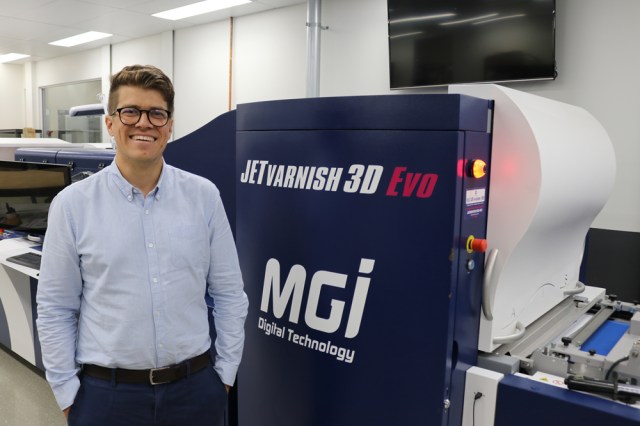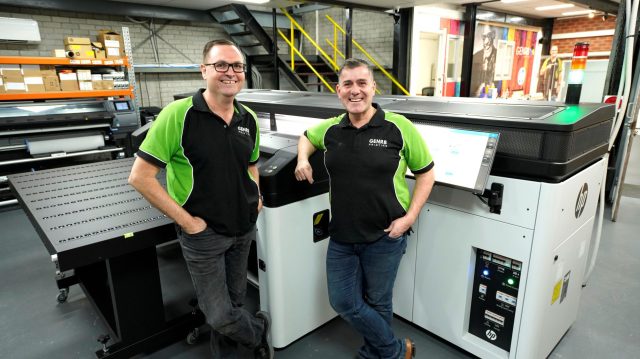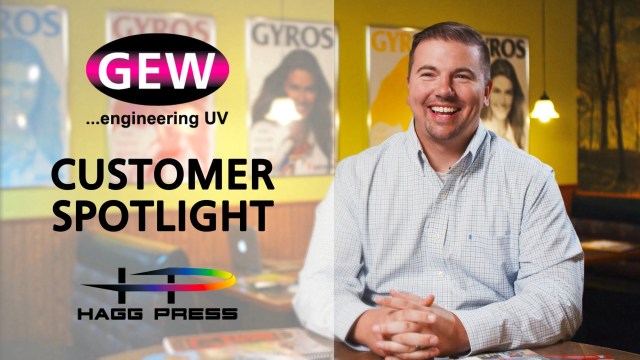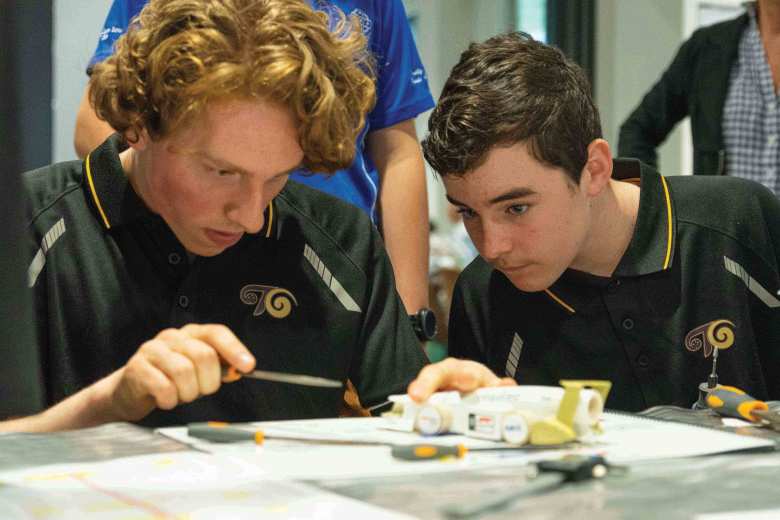
If you have ever thought about the future of engineering and manufacturing in Australia – have no fear, the next generation is at the top of their game and they’re making the rest of the world sit up and take notice.
The national finals of the F1 in Schools STEM Challenge in Melbourne, supported by Visual Connections, was a demonstration of passionate boys and girls pushing themselves to new limits to master industry-standard software, equipment and processes to innovate at an astonishing level.
F1 in Schools, which is not only the biggest Science-Technology-Engineering- Mathematics competition in Australia but also in the world, challenges students to form teams akin to Formula One with a manager, design engineer and a person in charge of manufacturing and resources. They have to design, make, test and race a miniature powered F1-style racer with an aerodynamic body and wings. It accelerates from 0-80 kilometres per hour in less than two seconds.
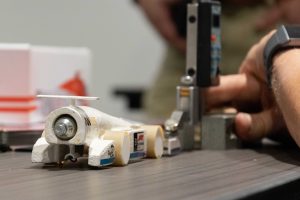
It was amazing to see teenagers engaged in animated discussions with the judges about machining techniques, 3D printing, drag coefficients and using various materials. Something you would expect to see in a professional design office or machine shop.
The students were encouraged to collaborate with industry and understand the design-to-manufacture process and exploded views of their cars on the multi-media pit displays showed just how much work had gone into them. Special wheels, hub assemblies and multi-layer aerofoils were made from the lightest possible materials.
Employers would be pleased to know that not only is this an engineering-manufacturing project, it includes sought after ‘soft skills’ including teamwork, problem solving, time management and communication. In fact, the students were judged on their presentation and ability to work together.
The national finals were staged at the Australian headquarters of Robert Bosch for the second year in a row and the global manufacturer excelled itself at encouraging the youngsters to consider a career in manufacturing. Staff members ran a series of breakout sessions which included augmented reality and autonomous technology.
Following several days of intense competition, with race times separated by hundreds or thousands of a second, the 36 teams attended the awards ceremony. The VIP list was a reminder of how highly respected the program is. It included Andrew Denford (founder of F1 in Schools UK), Thierry Chevrot (Education division of Paris-based software giant, Dassault Systemes), Professor Richard Hopkins (former Director of Operations, Red Bull Formula One), Tim Richardson MP (Parliamentary Secretary to Minister for Education, the Honourable John Merlino MP), Robyn Frampton (Visual Connections, representing the signage printing manufacturing sector), Associate Professor Warren Smith (UNSW), Engineers Australia and the Australian Institute of Project Management.
The recipients of the 40-plus awards came from across Australia showing that STEM is being promoted and led by a large contingent of educators. As expected, STEM strongholds Perth and Melbourne starred, along with Tasmania. The Gold Coast was a delightful newcomer.
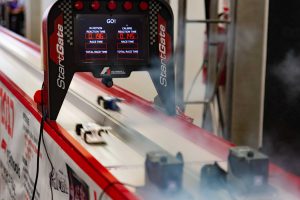
A team of students from Wesley College in Perth earned the title of National Champions in the Professional class. “Nebula” won awards for Best Engineering CAD, Best Engineered Car, Best Manufactured Car, Best Team Marketing and Best Team Pit Display. They will now prepare for the World Finals, which will be held in conjunction with a round of the Formula One championship. This is where they will face teams from 50 nations and all eyes will be on them. This is because since F1 in Schools began in 2004, Australia has had a strangle hold on it. Our tally is six world championships, five runners-up, three third places, the reigning world speed record (0.916 seconds), eight Best Engineered Car Awards and six Fastest Car Awards.
Victorian schools continued their dominance once again proving that Victoria is a STEM powerhouse on a global scale. “Seido” from Trinity Grammar School, Kew, claimed the title of National Champions of the Development (entry level) class. The school’s other team “Hydron” finished third in Professional. Between them they won seven awards.
Trinity’s team at the World Finals will also be under the microscope because the school has won the World Championships of F1 in Schools twice – a feat only equalled by one other school in the world (in Adelaide). They have also finished in the Top Ten twice. This makes them a leading STEM school at an international level. In recognition of this feat their teacher Peter Clinton, who introduced F1 in Schools to the school 15 years ago, was presented with the prestigious John Button Award For Outstanding Contribution To STEM Education by Tim Richardson MP. It is remarkable that for a decade and a half Clinton has continued to raise the bar. It is schools like his which are providing our nation with such high-quality designers and technicians.
Tasmania always ranks well at the National Finals and their teams picked up awards for Best Engineered, Best Manufactured Car, Best Managed Enterprise, Best Team Portfolio and Best Team Verbal Presentation.
Up north, in only their second appearance at a National Final, the Gold Coast Christian College owned the track. They entered four teams – the most from any school – and one team called “Dark Matter” made its presence felt with the slipperiest design. Not only were they runners-up to the National Champions (Professional), they won every on-track award: fastest lap, knockout competition, Grand Prix race and best reaction time (the cars are sent down the track by pressing a hand held trigger). A second team, “Soar Racing”, won the Development knockout competition making it an all-Gold Coast affair. “Vivacity” received the award for Best Managed Enterprise and student, Amelia Tegler, received the Engineers Australia Women in STEM Award for her work.
GCCC Principal, Guy Lawson, was honoured for his efforts and he was presented with the prestigious REA Founders Award. He was also made a Fellow of REA.
While you work away in your business, there are more than 25,000 high schoolers busily preparing for the next round of F1 in Schools knockout finals. And, they are the newest contingent of close to one million students who have been a part of the REA Foundation’s project-based STEM programs since they started in 1998.
Special thanks to the Department of Defence, Department of Industry, Visual Connections, Bosch, Autodesk, Dassault Systemes, Engineers Australia, Australian Institute of Project Management, Denford, Jetta Excess Baggage and Motorsport Australia for supporting this remarkable producer of such highly employable young people. If you want to invest in a movement which is building the future of this nation you couldn’t go past Re-Engineering Australia Foundation, the brainchild of Sydney engineer, Dr Michael Myers OAM.
Company: Visual Connections
https://www.visualconnections.org.au/
Comment below to have your say on this story.
If you have a news story or tip-off, get in touch at editorial@sprinter.com.au.
Sign up to the Sprinter newsletter

